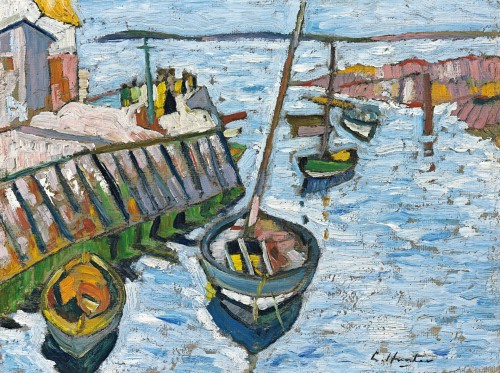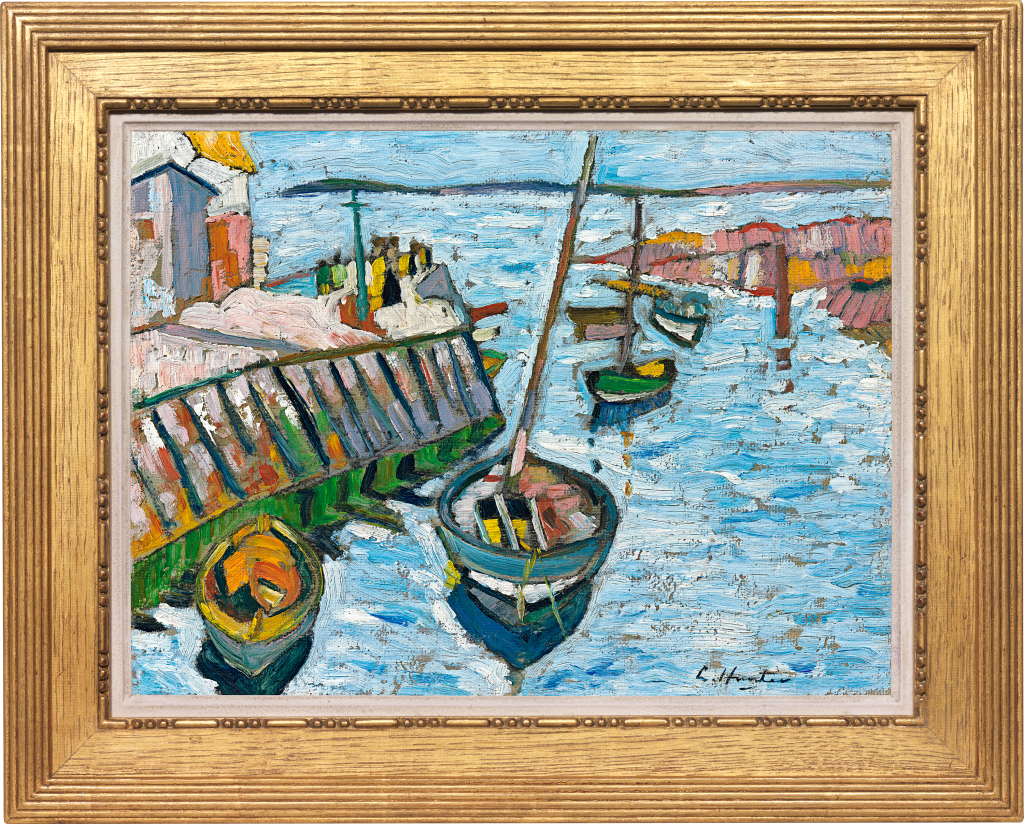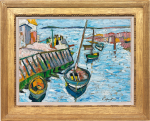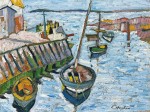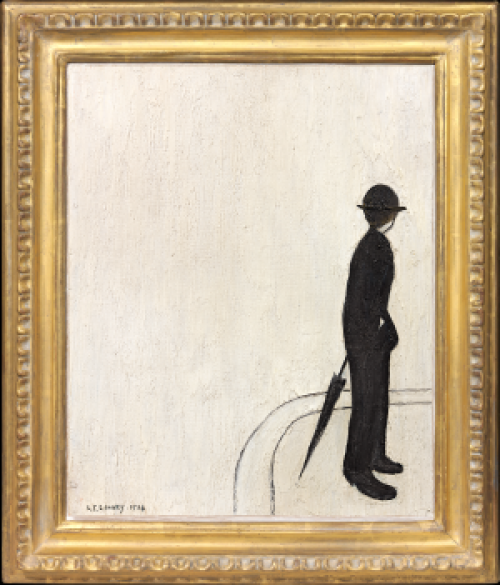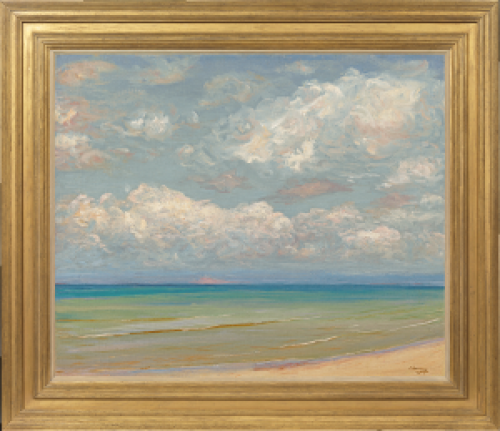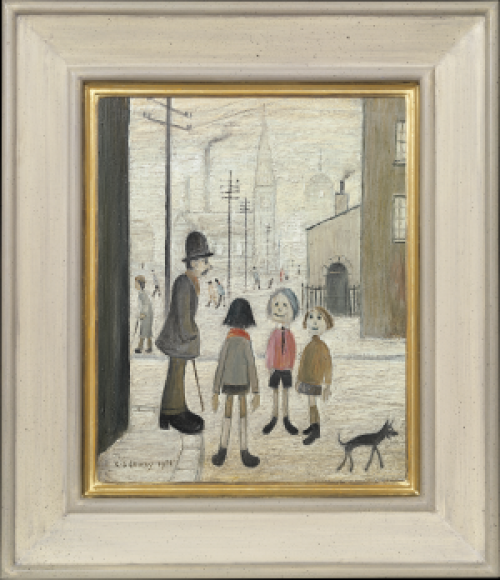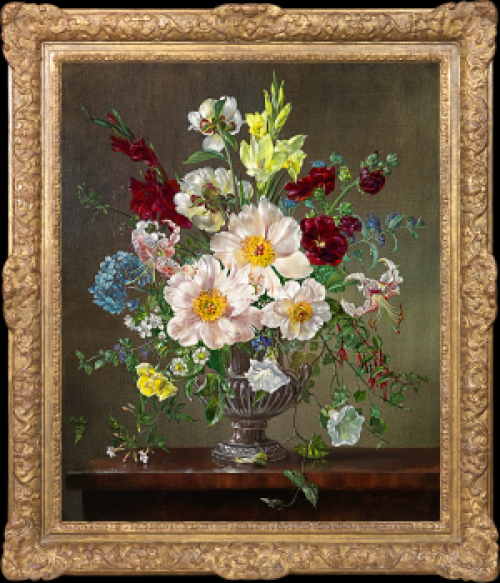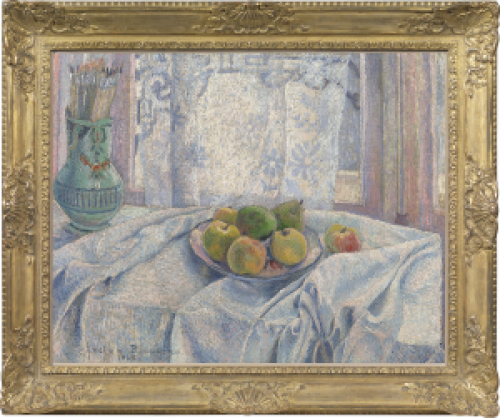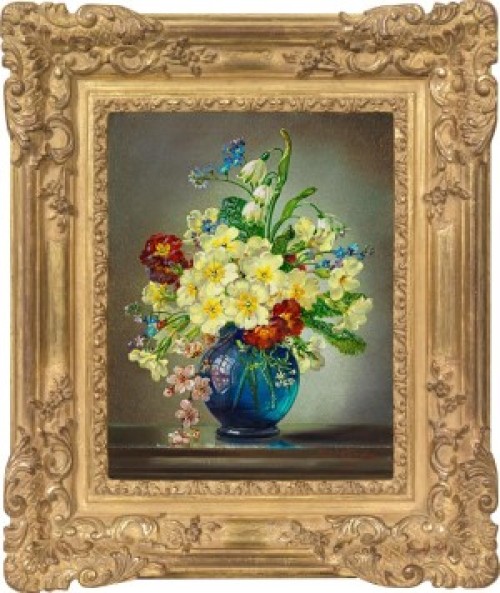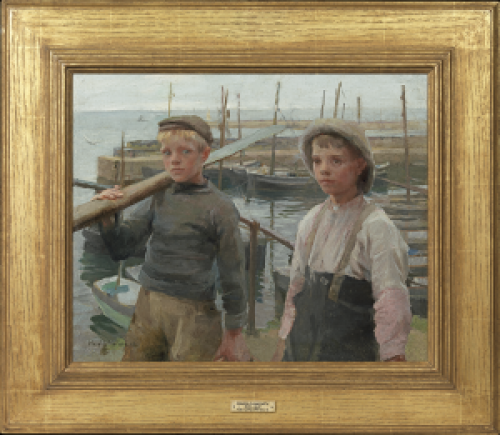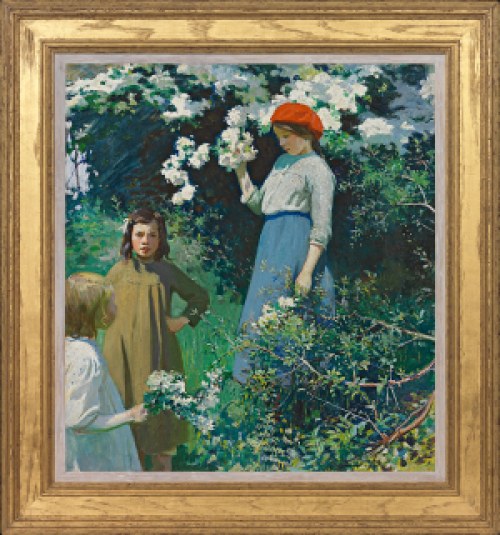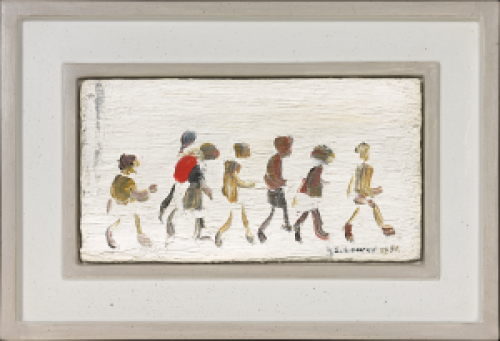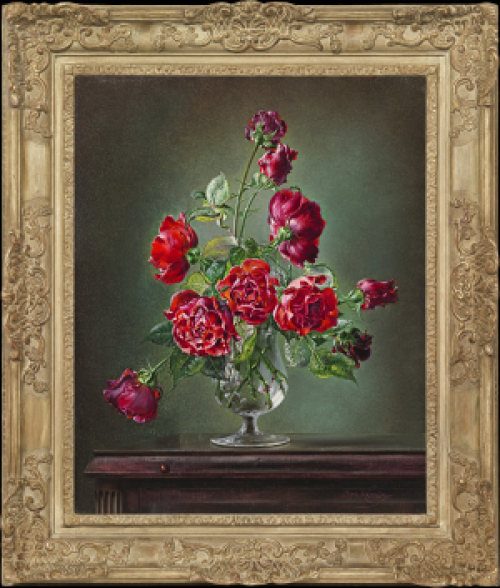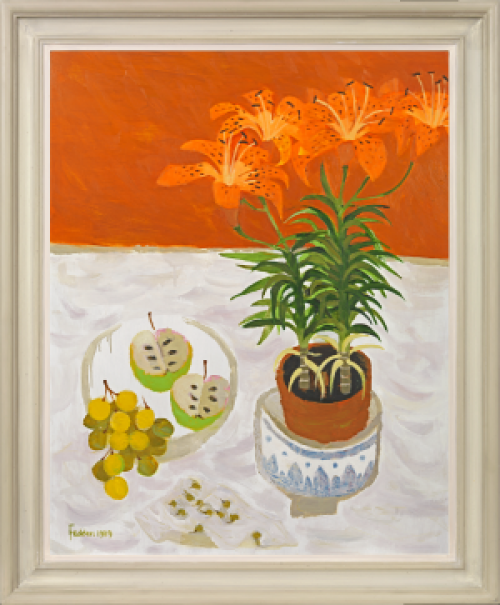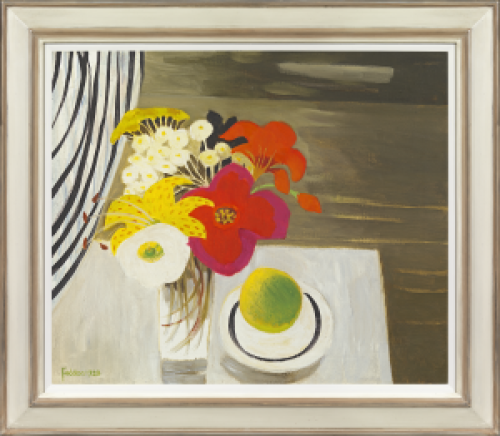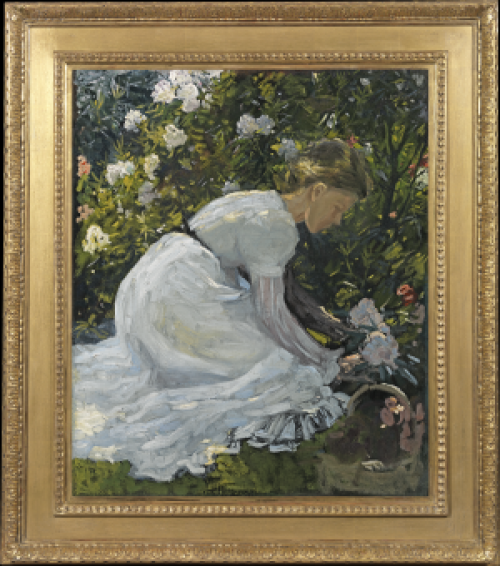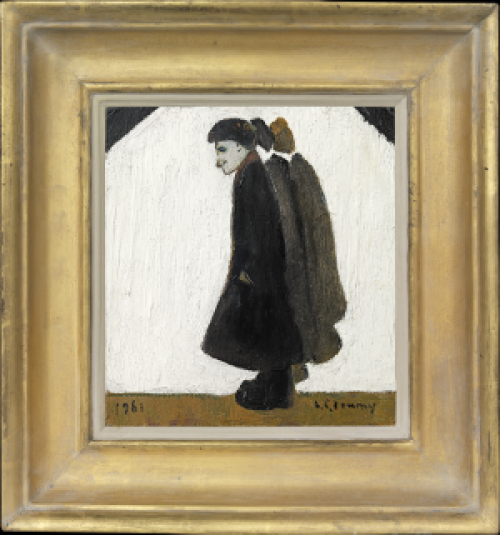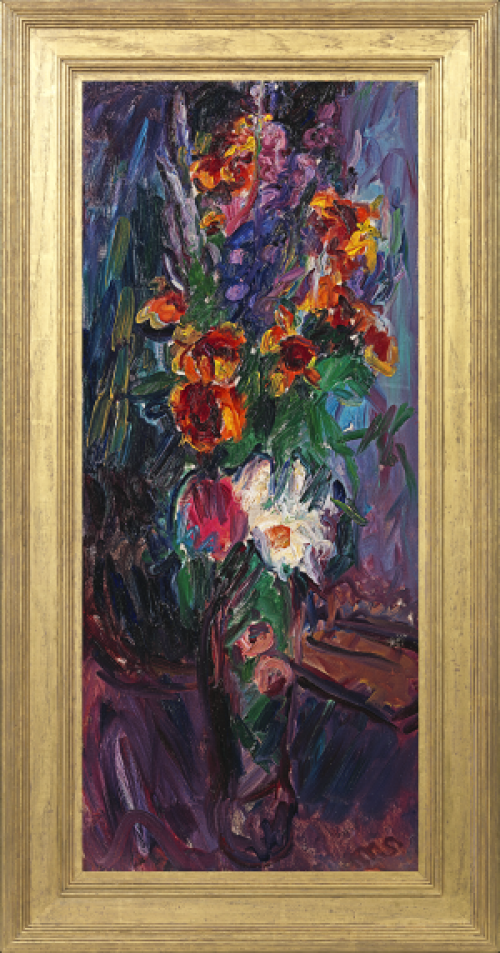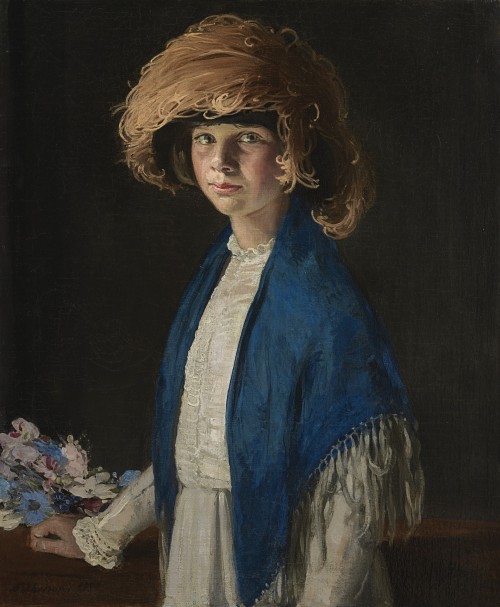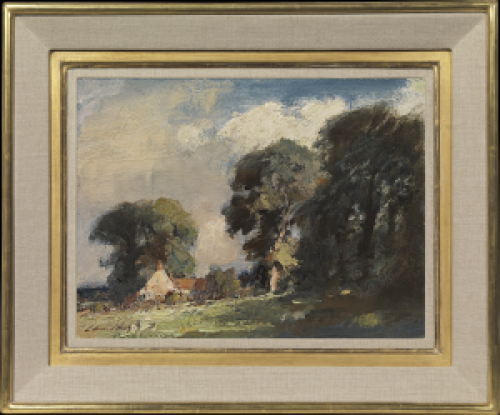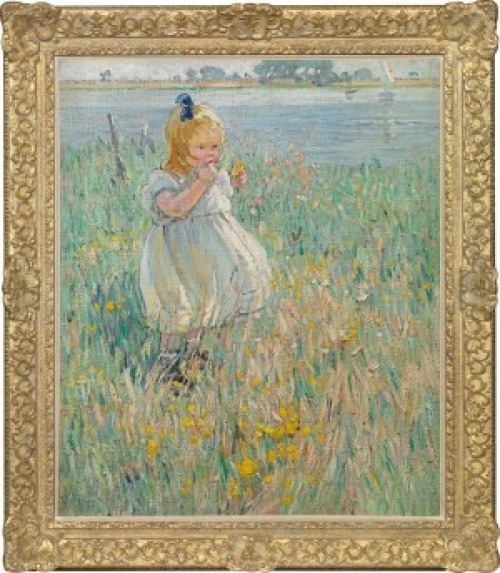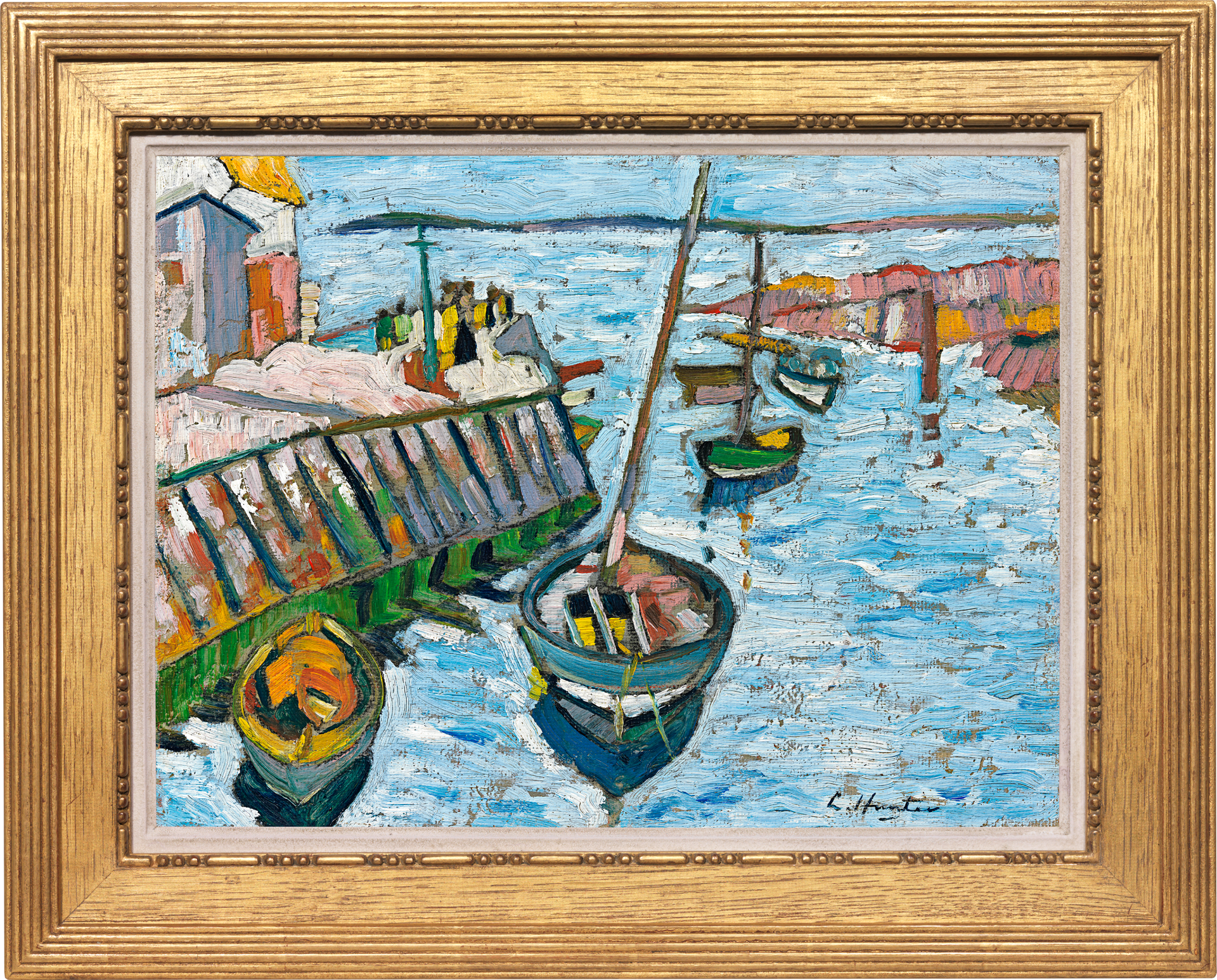GEORGE LESLIE HUNTER
Rothesay 1877 - 1931 Glasgow
Ref: CD 131
Largo Harbour
Signed lower right: L. Hunter
Oil on board: 12 x 16 in / 30.5 x 40.6 cm
Frame size: 16 ½ x 20 ½ in / 41.9 x 52.1 cm
In a Whistler-style frame with a carved front edge
Painted circa 1920-26
Provenance:
Private collection, Chiswick
Private collection, UK, circa 2005
George Leslie Hunter began painting coastal scenes of the beautiful East Neuk of Fife after the First World War, from 1919 until 1926. One of his favourite locations was the picturesque jetty and small harbour at the mouth of the Keil Burn at Lower Largo, a fishing village on the north side of the Firth of Forth. In his biogrpahy of the artist, TJ Honeyman writes: ‘He spent most of the summer in Largo (Fife), where he did some of the finest paintings of his career. The open-air life was of great benefit to him physically and mentally and his letters are those of a man who feels himself ‘on top of the world.’[1]
Hunter’s interest in the light and colour specific to Fife was to effect a marked change on his handling of paint as well as his palette. Hunter exhibits an energetic enthusiasm of execution and a brightening of tone comparable to the lightness of his mood. Having found such an inspirational subject, he sought to represent it in all its glory, capturing different conditions of light, the ever-changing hues of the sea and the character of the tide in oil and watercolour, as well as sketches in ink and crayon.
Hunter’s passion for this place can be seen in this idyllic harbour scene, its high horizon and wide expanse of water interupted on either side by natural and man-made promontories. Hunter delights in the brightly coloured gunwales of small wooden rowing boats and the choppy texture of the sea. Though vigorously applied, the paint is superbly controlled, descriptive of shape and volume as well as surface.
[1] TJ Honeyman, Introducing Leslie Hunter, Faber and Faber, London (first published 1937), Special Edition 1942, p.93.

